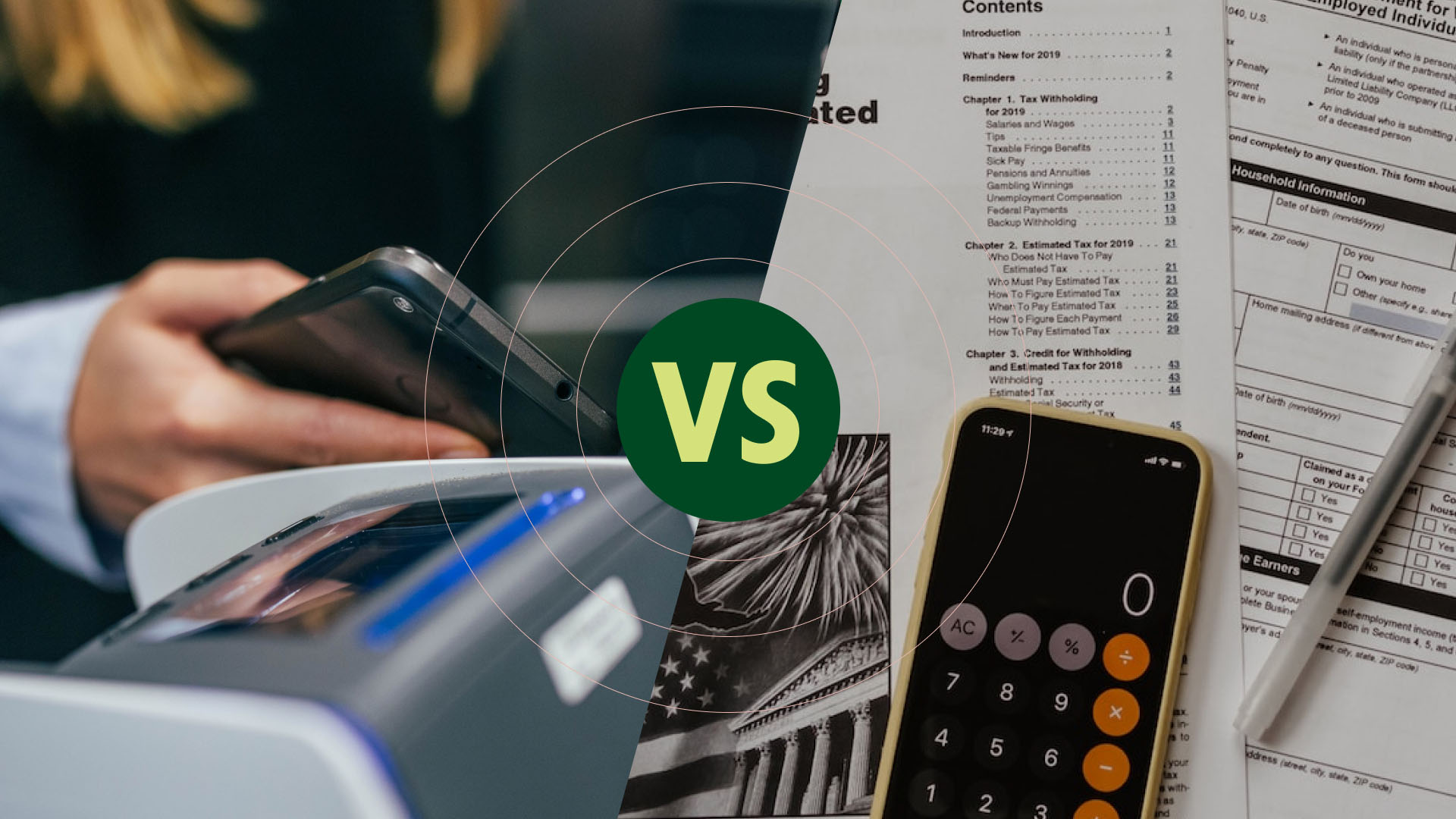You can use business-to-business ACH payments to manage your cash flow and support your company’s accounts payable and accounts receivable process. But what exactly is a business-to-business ACH payment, and what are the benefits?
Business-to-business ACH payments, also known as Automated Clearing House payments, are electronic transfers of funds between two business bank accounts. This payment method has been around for decades and has become increasingly popular due to its convenience, reliability, and cost-effectiveness. 💸
In fact, the ACH network processed 26.8 billion payments in 2020 alone, and that number is on the rise. As a small business owner, ACH payments are particularly useful—allowing you to streamline your financial operations and reduce the time and costs associated with traditional paper-based payments. 🎉
Webinar: Turn Your Business Into a Money-Making Machine
Unlock the secrets to transforming your business from a job into a profitable, cash-generating machine.
Register NowIn this article, we’ll cover:
🏦 What does ACH stand for?
ACH stands for automated clearing house, the network used for electronic fund transfers (ETFs). The ACH network can move ETFs from one bank or financial institution to another. Banks use the Automated Clearing House Network to process ACH payments multiple times per day.
The National Automated Clearinghouse Association (NACHA) network manages and governs the ACH network. NACHA ensures the fast and secure transfer of funds between financial institutions within the US.
What is a business ACH payment?
A business-to-business ACH payment occurs when one business uses the automated clearing house (ACH) network to transfer electronic funds to another company. Businesses typically use ACH to pay for goods and services or to request payment for goods and services. ACH transfers are cheaper than credit card payments because they don’t have to go through the card processing network. That’s why many businesses prefer to send and receive next-day or same-day ACH payments instead of using credit card payments (or wire transfers, which can also be more expensive than ACH payments).
Business ACH payments also offer more security than traditional payment methods. Unlike paper checks, which can be lost or stolen, business-to-business ACH payments are sent through NACHA’s secure payment network. 🔐
You can send business-to-business ACH payments using your business bank account. For example, Relay (that’s us! 👋) is an online business banking platform that allows small business owners to send and receive no-fee, next-day ACH payments. This makes it easy to pay contractors, vendors, and everyone else—right from your mobile banking app or computer. 💻
ACH payment basics
Wondering how to use B2B ACH payments for your small business? Before we break down the ACH payment process, there are a few key terms you’ll need to know:
National Automated Clearing House Association (NACHA): NACHA is the organization that governs, maintains, and creates policies for ACH transfers.
Originating Depository Financial Institution (ODFI): the bank or financial institution that initiates the ACH transfer is called the ODFI.
Receiving Depository Financial Institution (RDFI): the bank or financial institution that receives the transfer request is called the RDFI.
You’ll need to provide some basic account information when you set up ACH payments, including:
The routing numbers for each business
The bank account numbers for each business
The name of each party’s bank or financial institution
The amount of money you want to transfer
Once you have the correct information on hand, you can request an ACH transfer. You can typically request an ACH transfer through your bank or financial institution’s online portal. 💻 The ACH transfer will happen in 3 simple steps:
Step 1: The OFDI sends a request to the RDFI for the payment amount. This step initiates the ACH transfer.
Step 2: The two institutions confirm there are enough funds to complete the transfer request.
Step 3: The bank will then move the funds and complete the request. ✅
How do business-to-business ACH payments work?
You can think of B2B ACH payments as direct deposits for businesses. Business ACH payments allow one company to transfer funds from their bank account to another business’s bank account. Businesses can transfer funds between different banks or financial institutions, too. 🏦
Business-to-business ACH payments are like business-to-customer ACH payments, but business ACH payments have a few more requirements. For example:
You can’t send a business ACH payment unless you have a business banking account. If you don’t have one, you can set it up through your bank or financial institution’s online banking portal.
Confirm that your payment processor can add ACH payments to your POS system.
Provide customers with an ACH agreement that states the customer allows you to request ACH payments from their bank account. The agreement can be for one-time payments or recurring ACH transactions.
Keep in mind that business-to-business ACH payments fall into one of two categories: ACH credits and ACH debits. You’ll need to know which type of ACH transaction you’re requesting. 💰
ACH debit vs. ACH credit
ACH debits are initiated by the business that will be receiving the funds. It’s different from an ACH debit card transaction. ACH debits are typically preferred over ACH debit card payments since ACH debit card transactions charge the merchant 1% of the total transaction cost. 😬
The business which needs to pay the other party initiates the ACH credit. Think of an ACH credit as an electronic check. It’s like an electronic payment that transfers funds from one bank account to another, eliminating the need for paper checks.
How long do business ACH payments take?
ACH payments can take 1 to 3 business days to complete. 💸 You can transfer funds quickly because NACHA processes ACH payments four times per business day.
If you need to send money fast, you may want to consider a same-day ACH payment. But keep in mind that some financial institutions may charge a fee for same-day transfers.
With Relay Pro, you can send unlimited, free same-day ACH payments and outgoing wire transfers for just $30 per month. You can also automate bill approval rules for your team and pay all your bills—without leaving the Relay platform.
Webinar: Turn Your Business Into a Money-Making Machine
Unlock the secrets to transforming your business from a job into a profitable, cash-generating machine.
Register NowBenefits of ACH payments for small businesses
There are several ways business-to-business ACH payments can help small business owners take charge of their finances and optimize their cash flow. Here are some key reasons to use B2B ACH payments:
Lower processing costs: B2B ACH payments are cheap alternatives to wire transfers because they don’t charge processing fees. 💰
Lower transaction fees: Transaction costs can vary by financial institution, but it’s typically free to transfer ACH payments through the ACH network.
Reduce the risk of errors or fraud: Paper checks can get lost or stolen, but you send ACH payments through a secure network managed by NACHA. 🔐
Improve cash forecasting: ACH payments support fast payment windows and help you access your cash in real time. This reduces the risk that clients will pay late and can help you rely less on credit. 💳
Automate financial records: B2B ACH payments make it easy to track your transaction history and access it all in one place. Instead of worrying about paper records, ACH allows you to keep everything digital.
Streamline the accounts payable process: Do you need to set up multiple recurring payments for different vendors? Business ACH is much easier (and faster) than writing checks for every individual vendor.
😎 Send and receive business-to-business ACH payments with Relay
If you’re looking for a business banking solution that lets you send free next-day ACH payments and gives you full control over your day-to-day money management, Relay might be right for you.
Relay gives small business owners the ability to open 20 free business checking accounts — with no monthly fees, overdraft fees, or minimum balance requirements. 🙌💸 Relay also offers 50 virtual or physical debit cards, savings accounts, percentage-based auto-transfer rules, and more.
With Relay, you can spend, save, and plan more efficiently and get unparalleled clarity into operating expenses, cash flow, and accounts payable. Ready to get started? Make the switch to Relay today.




